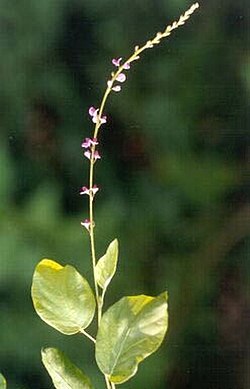| Pleurolobus gangeticus | |
|---|---|
 | |
| Scientific classification | |
| Kingdom: | Plantae |
| Clade: | Tracheophytes |
| Clade: | Angiosperms |
| Clade: | Eudicots |
| Clade: | Rosids |
| Order: | Fabales |
| Family: | Fabaceae |
| Genus: | Pleurolobus |
| Species: | P. gangeticus |
| Binomial name | |
| Pleurolobus gangeticus (L.) J.St.-Hil. ex H.Ohashi & K.Ohashi | |
| Synonyms [1] | |
List
| |
Pleurolobus gangeticus, commonly known by the name salparni, is a plant found throughout most parts of India and the Himalayas.[ citation needed ]